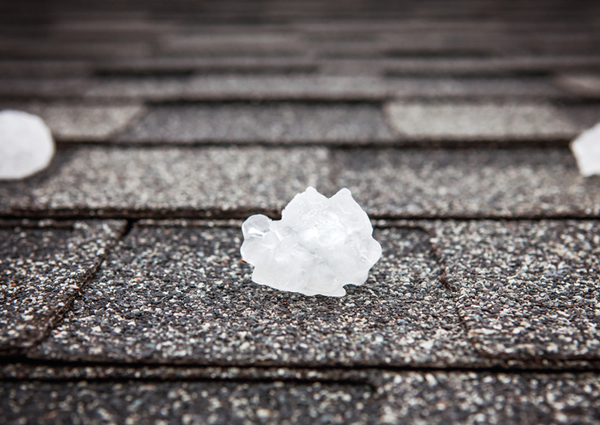How to Assess Roof Damage Following a Hailstorm
Author: Lee Polevoi | April 21, 2020
Even though hail can be a rare experience in some regions, homeowners need to know how to assess hail damage to shingles and other roofing materials. According to the National Oceanic and Atmospheric Administration, more than 4,600 major hailstorms occurred throughout the U.S. in 2018. Hail can range from the size of a marble to a tennis ball to record-breaking lumps of ice as big as softballs.

Even if it's on the small side, hail can cause significant damage to shingles and other types of residential roofing. Here's how to identify and treat this kind of weather damage.
Functional and Cosmetic Damage
Generally speaking, there are two types of damage to consider: Functional damage affects a roof's structural integrity, and cosmetic damage harms a home's visual appeal.
Cosmetic damage may only be a small chip or dent here and there, but functional damage to shingle roofs can include tears, fractures, punctures or the loss of granules from the surface of asphalt shingles. When granules are lost, the underlying asphalt becomes susceptible to long-term weathering from the sun's UV rays. This may lead to blisters and cracks, as well as water leakage.
What to Look for After a Hailstorm
Hail damage to shingles isn't always easy to detect. Experts advise starting your roof inspection by closely examining the roof's ridge (the highest part where the slanted sides meet). Hail strikes the ridge at a perpendicular angle, so you may see the first signs of damage there. Obvious splits or cracks in shingles following a storm will also highlight an obvious problem. Depending on the extent of the damage, it's possible to spot areas where clusters of granules have gone missing.
In the case of minor hail damage, it may be hard to spot missing granules just by looking at your roof. Check your gutters for displaced granules that may have washed off the roof during a hailstorm or rainstorm. If you find a significant amount of granules in the gutters, it's a clear sign that some roof damage has occurred, and you should call a contractor for repairs.
Shingles can also become "bruised" as a result of a severe hailstorm. Check under a displaced shingle to see if the spot feels spongy or soft. A soft spot or an indentation where the roof should be flat points to a weakened shingle or shingle mat.
If you don't have an asphalt shingle roof, your home can still take a beating from hail. Look out for split wood shakes, cracked or gouged clay and slate tiles, or dents in metal roofing.
Taking the Next Steps
After a severe storm, it's wise to consult a professional roofing contractor to take a look at your roof's surface and structure. A contractor's trained eye can assess the extent of the damage, determine whether it's functional or cosmetic, and know what steps to take next.
The key is not to wait too long following a severe weather event of any kind. Walk around the house to make a ground-level inspection of your roof as soon as the storm has stopped and it's safe to do so. If you have any questions, talk to a roofing contractor who knows what damage hail can cause and the steps needed to repair or replace your roof.